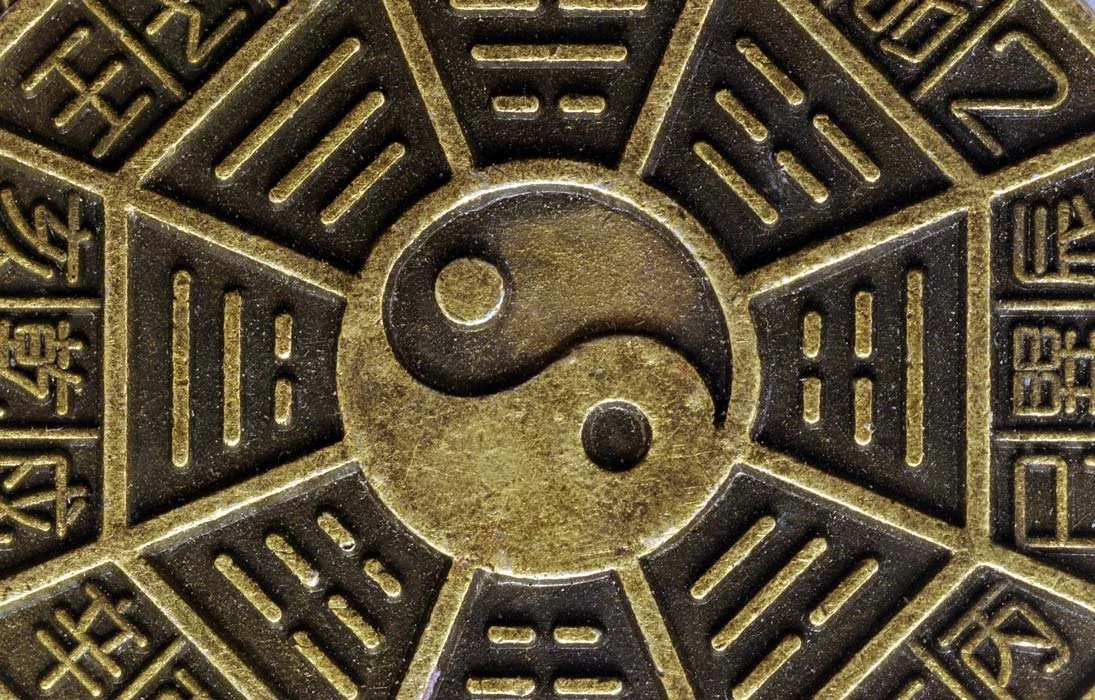Yin and yang is a concept that most people have heard of before, whether in yoga, Tai Chi, or something else. However, because these contrasting energies are known to be two opposites, people naturally assume one must be better.
One common question people ask is, “is yin good or bad?” The confusion comes from some of the yin characteristics that may seem undesirable. However, when you understand the true meaning of yang-yin, you’ll see that yin and yang both have positive and negative qualities.
Moreover, balancing these energies allows you to draw out the good in each. In this state of harmony, neither is bad. Let’s explore this idea in more detail.
Contents
What Is The Yin Yang Concept?

The yin-yang concept originates from ancient Chinese philosophy yet plays a crucial role in many other philosophies and cultural practices, including Buddhism, Taoism, and yoga.
Yin and yang are interconnected yet opposite forces existing in nature and the entire universe. Some common examples are night and day, hot and cold, and sleeping and awake. The concept of yin yang is that both forces need each other, as you cannot have one without the other.
In Chinese philosophy, yin is “like the weather and conditions on the shady side of a mountain,” while yang is “like the weather and conditions on the sunny side.” When interconnected, yin and yang become chi (life force), a vital energy current that runs through our bodies, responsible for our circulation, and delivery of nutrients and minerals.
Excess of one can lead to malaise, which is why for centuries, Chinese people have followed practices to create a balance between both energies in their bodies and their environments.
Yin Characteristics

- Feminine
- Passive
- Slow
- Darkness
- Night
- Cold
- Autumn and winter
- Moon
- Black
- Receptive
- Retreating
- Quiet
- Weak
- Flexible
- Internal
- Intuition
- Mental
Although yin is known as feminine, every male will have some yin energy, while every female will have some yang energy.
People with dominant yin energy are typically peaceful, relaxed, easygoing, and introverted. They may have a vibrant imagination, deep thought process, and a solid connection to their intuition. However, they could be more emotional than yang types and may overthink things or hesitate when making decisions.
Yang Characteristics

- Masculine
- Active
- Fast
- Bright/Light
- Day
- Hot
- Spring and summer
- Sun
- White
- Movement
- Advancing
- Loud
- Strong
- Solid
- External
- Logic
- Physical
Studies have shown that yang people are active, extroverted, and ambitious. They may seem like they are also on the go and never tire. They may appear flexible and carefree in their decisions but are more likely to get irritable or stressed than a yin person.
Is Yin Positive Or Negative?

When you compare the characteristics of yin and yang, you might assume yang is better, stronger, or more desirable than yin. For example, yin is seen as slow and passive, while yang is fast and active. Thinking about these energetic qualities in the human body, you may think yin is a negative energy.
However, yin should not be seen as unfavorable as both forces are equally important. For example, yang energy is helpful when you are working towards a deadline or making your way through a long to-do list.
Yang energy gives us the fire, motivation, and determination to get things done, whether it’s in the office, the gym, or managing things in a busy family household.
But having yang energy all the time would not be a positive thing. You would struggle to switch off, feel restless, and have much difficulty sleeping at night. Yang-dominant people tend to continually push themselves further and can become “workaholics.” They may have the belief that rest is for the weak or unnecessary, so they keep going.
This yang-fuelled attitude can be highly damaging to our health. The passive qualities of yin, such as rest and stillness, are essential for keeping our nervous system balanced. If yang energy remains dominant and yin lacks, we’ll eventually burn out and get sick.
The same is true the other way around. Having too much yin energy and not enough yang can result in a constant state of fatigue and tiredness, making it difficult to get anything done.
Therefore, on their own, yin or yang could be harmful, but when balanced, the two forces are always positive. Taoism teaches that disharmony (evil) is due to an imbalance of yin and yang. Thus, you should strive to cultivate a natural order of both energies rather than focusing on just one.
Neither is better than the other, but you may find one energy more beneficial in certain situations or at certain times of the day. Also, both yin and yang have their advantages. For example, yin is more inward-thinking and spiritual. It can help us cultivate a deeper connection to ourselves and the universe. On the other hand, yang allows us to set and achieve our goals and pushes us to follow our dreams.
The Meaning Behind The Yin And Yang Symbol

The misconception that yin is bad may come from a misinterpretation of the symbol. The yin-yang symbol shows two halves of a circle, one black, and one white. The white/light side represents yang, and the black/dark side represents yin.
However, if you look closely, you’ll see the symbol reveals the true meaning of yin and yang; that they are not complete opposites but complementary forces. Nothing can be 100% yin or 100% yang because they are relative to each other. Everything in the universe contains components of both, just with different ratios.
This is shown in the yang-yin symbol through the inner dots. In the black half of the circle, there is a small white dot, and in the white half, there is a black dot. This shows that there can never be one without the other and is related to the belief that evil cannot exist without goodness. However, in Taoism, both yin and yang are good, with neither representing evil.
Another way the relationship between yin and yang is symbolized is through the curved lines. Rather than a straight line separating the two energies, a curved line shows their interaction as they merge.
Many people like to wear the yang-yin symbol as jewelry to remind themselves of the importance of balancing the two forces. There are many beautiful pendants and bracelets, like this one from Moo & Lee. Along with the yin-yang symbol, it has the Chinese characters of a blessing from the Taoism Supreme Lord and an ancient spell to exorcise all evil from the spirit world.
Final Thoughts On The Meaning Of The Yin Yang Symbol
Although they are two opposite forces, yin and yang do not relate to the concept of good and evil. On the contrary, nature shows us that yin and yang cannot exist without each other. Their interaction strengthens their positive qualities, bringing everything into perfect balance.
If you’re interested in diving deeper into this philosophy, I highly recommend reading the book Yinyang by Robin R. Wang.


